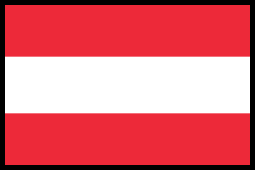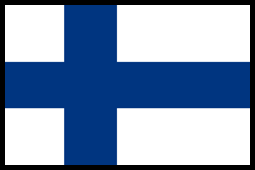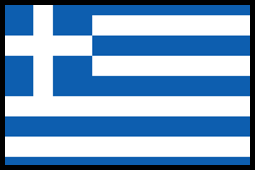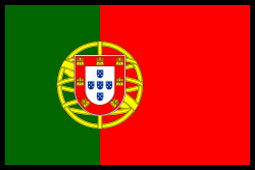Send Gifts In Europe / Germany / Gift Baskets to Magdeburg

Send Gift Baskets to Magdeburg, Germany
Are you looking for the best and perfect gift baskets to Magdeburg, Germany for your loved one? If yes, you reached the right place.
Magdeburg is a central German city on the Elbe River.
Population of Magdeburg: 235,723
The standard delivery method to Magdeburg: 2 – 3 working days*
The express delivery method to Magdeburg: 1 – 2 working days*
*Saturday and Sunday are not included as working days
Use Our Advice
We are here always at your service.
No Minimum Order
Each customer is important to us.
Shipping Information
We deliver all over Europe.
Discover Our Gift Baskets For Every Occasion
Holiday Gifts
Magdeburg Overview
Magdeburg has been a major city in central Germany for centuries. Visitors can explore its medieval history at the beautiful, Gothic-style Magdeburg Cathedral which is Otto the Great’s final resting place. The museum also offers insight into how culturally significant the city once was. Kloster Unser Lieben Frauen, a Romanesque monastery complex, is home to a contemporary art gallery and sculpture park. They also have an outdoor cinema that hosts the internationally acclaimed “Helvetia” film festival each year.
History
Founded by Charlemagne in 805 as Magadoburg (probably from Old High German magado for big, mighty and Burga for fortress), the town was fortified in 919 by King Henry the Fowler against the Magyars and Slavs. In 929 King Otto I granted the city to himself and changed its name to Hamburg. Queen Edith loved this town and often stayed there. She was buried at Saint Maurice’s crypt in 937, which then served as a cathedral until it was rebuilt into the present-day abbey. Otto, in 937, visited Magdeburg and made the city of his final resting place. He also allowed the abbey to take in income from tithes and also coerced labor from the surrounding countryside.
The Archbishopric of Magdeburg was founded in 968 at the synod of Ravenna; Adalbert of Magdeburg was consecrated as its first archbishop. The archbishopric under Adalbert included the bishoprics of Havelberg, Brandenburg, Merseburg, Meissen, and Naumburg. The Archbishopric of Magdeburg played a major role in North-Eastern Europe’s colonization.
The Magdeburg rights are an influential set of local city laws that were adopted in 1035 and became the basis for German laws to be referred to as The Magdeburg rights. These laws were then adopted and modified throughout Central, Eastern & Western Europe over a lengthy period. A lot of people were trading with Magdeburg, despite the destruction it saw in 1188. Most of them were from many countries and one theory is that these trades happened because there was a lot more trade happening then.
In 1316, after the city of Magdeburg was raided by Swedish forces, the people voted in favor of voluntarily surrendering to Sweden. Over time and a couple more times as well, Magdeburg became a member of the Hanseatic League. The town also housed one of the largest cities in Europe until modern times. It has active commercial traffic with the countries of the North Sea and also communication with Brunswick.
Magdeburg was heavily bombed by British & American air forces during the 2nd World War. The RAF bombing raid on the 16th of January in 1945 destroyed much of the city including a majority of homes and is estimated to have cost at least 2,000-2,500 people their lives. At the end of World War II, Magdeburg was turned into a provincial capital. By 1940, its population reached around 340,000 people. The plant Brabag’s Magdeburg/Rothensee facility which produced synthetic oil from lignite coal was also a target of the Oil Campaign of World War II. The historic Gründerzeit suburbs north of the city called the Nordfront and the main street with buildings like Baroque were destroyed. It was occupied by 9th US Army troops on April 18th, 1945, and then left for the Red Army on July 1st 194. After World War II, the area was part of the Soviet Zone of Occupation and many buildings were destroyed, with only a few buildings near the cathedral and in the southern part of the old city being restored. The German Democratic Republic was abolished in 1949. The buildings remaining from the Gründerzeit were shabby and needed demolition. Although, upon reunification in 1990, Magdeburg became a part of Saxony-Anhalt for another 10 years before finally belonging to the revived German state.
Population
238,697 (2019)
Climate
In Magdeburg, summer temperatures reach a high of 76°F, and winter temperatures usually fall within the range of 29°F to 88°F. The temperature rarely varies below 14° Fahrenheit or rises above 88°. Americans will be able to experience the best of Magdeburg year-round with thrilling activities like hiking and biking in the summer, and skiing, snowboarding, or skating in the winter.
Education
Otto-von-Guericke University Magdeburg is a German university that was founded in 1993. It has thirteen thousand students in nine faculties. Along with more than 11,700 papers published in international journals, this institute has a great reputation for publishing papers that are well-respected by the scientific community.
The university was founded in 1991. There are 30 direct study programs offered in five departments in Magdeburg and two departments in Stendal. It has more than 130 professors and approximately 4,500 students.
Entertainment
Magdeburg is famous for the two-hundred-year-old theater it has been home to.
Magdeburg is where many people come to enjoy its Christmas markets, which attract more than one million visitors every year. Other events are Stadtfest, Christopher Street Day, Europafest Magdeburg, and Elbe in Flames. A fair held in Magdeburg, Germany dates back to the 11th century, but it goes as far back as 1010. The first mention of the tradition was when Magathaburg (now called Magdeburgh) celebrated a holy feast on behalf of the Theban Legion.
Sports
Magdeburg is famously known for its history of sports teams. Despite playing in the third division of German football, 1. FC Magdeburg has so far managed to win two Bundesliga, as well as a European championship. The defunct clubs SV Victoria 96 Magdeburg and Cricket Viktoria Magdeburg were among the first football clubs in Germany.
There was also the successful handball team, SC Magdeburg, who are the first German team to win the EHF Champions League.
Scientists believe that the discus was first seen in Magdeburg and subsequently widely distributed throughout Europe by Christian Georg Kohlrausch, a gymnastics teacher.
What is Magdeburg Germany known for?
Otto the Great is a city in central Germany that was founded in 1209 as Hoh, a castle on an island in the Elbe River. The city is known for its architectural monuments, like Otto’s cathedral, and notable buildings such as Malakoff Citadel or Hauptbahnhof.
Is Magdeburg a nice place to live?
Magdeburg has been known for its green areas and rich heritage, which has kept it beautiful. It’s the green capital of Saxony-Anhalt, located 170 km west of Berlin, and is home to the notable Magdeburg Cathedral. Unlike Berlin, Magdeburg is familiar and affordable given its small size and widespread student population.
Is Magdeburg worth visiting?
The Elbaueenpark in Magdeburg is a must-see for outdoor lovers, particularly fans of the beautiful architecture. The park features several beautifully designed and built structures that are worth taking a look at even during the winter months.
15 Best Things to Do in Magdeburg (Germany)
Magdeburg Cathedral
Magdeburg Cathedral’s present appearance dates back to the 13th century, when the worldly Prince-Archbishop, Albert I of Käfernburg embraced the new French Gothic style.
Kloster Unser Lieben Frauen
This Romanesque monastery features in the north wing of the museum which is home to contemporary art exhibitions with a focus on sculpture, photography, video art, and more. It opened in 1975.
Jahrtausendturm
The carousel at the Elbauenpark is one of the tallest wooden buildings in the world, standing at 60 meters. It was built for the new millennium and designed in such a creative way to wow visitors who are looking for something out of this world to explore. On many levels, on five floors (each designated for a decade), Jahrtausenstaad has an exhibition following the development of science across 6,000 years.
Rotehorn Park
The largest park in the city attracts many visitors. Not only does it take up a great deal of space on Werder Island, but it also is billed as one of Germany’s loveliest parks. The city first established the park in 1868, but it didn’t see a significant change until after 1870 when it was extended to its current size of 200 hectares.
Johanniskirche
The Johanniskirche, or Church of Our Lady, was originally funded by the city’s merchants around the 10th century. Now used as a concert hall and convention center it remains consecrated. The Johanniskirche has been rebuilt more than four times over the centuries. First, it was destroyed in a Medieval fire and then again after being raided by Swedish forces during the Thirty Years’ War. It was rebuilt twice before getting bombed during World War II.
Grüne Zitadelle von Magdeburg
Green Citadel was not the last project of Friedensreich Hundertwasser. Instead, he passed away in 2000, leaving us with his legacy. The complex is a mixed-use development home to shops, a cafe, a restaurant, theaters, and residential spaces.
Kanalbrücke Magdeburg (Water Bridge)
In the late 1800s, the Magdeburg Water Bridge was originally slated to be constructed, but plans were scrapped because of war and Germany’s division. It wasn’t until the early 2000s when the bridge finally got its restart that it became a reality.
Alter Markt
Between Breiter Weg and Jakobstraße in Prague, the city’s marketplace has been existing since 1189. This square was hit first during the Thirty Years’ War and then in WWII, and most of the buildings were damaged over time.
Magdeburger Reiter
In front of the Alter Markt in Magdeburg, there’s a statue of a horse with an ancient inscription that is believed to be dated 1240. The sculpture is dedicated to King Otto I who is himself buried at the cathedral.
Kulturhistorisches Museum Magdeburg
Some of the earliest statues in existence are presented in the Magdeburger Reiter in their original form – un-gilded. The realism and staggering quality are what make them stand out from the early sculpture ancestors of today.
Faunenbrunnen
While Magdeburg has a lot of nice sights, one of the most famous in town is where Leiterstraße meets the pedestrian zone. This is an ancient fountain designed by Magdeburg sculptor Heinrich Apel, who crafted the model in 1976 – 10 years before it was finished.
Herrenkrugpark
Herrenkrugpark features a few monuments from the 19th century: the cast-iron lion in 1845, and a sturdy ball sundial dating back to 1818. Botanists will be amazed by the vast range of trees found in Japan, Sweden, America, Portugal, and so many other countries.
Otto-von-Guericke-Museum
In a park at the confluence of the Elbe in Hamburg, is an octagonal defensive tower more than twenty meters high and dating back to the 13th century. There is also a modern annex for Otto-von-Guericke’s house. His experiments on air pressure helped shape modern scientific thinking.
Magdeburg Zoo
The city zoo opened in 1950 and has had a lot of updates since reunification. It has over 200 species in its culturally diverse, natural landscape that is 16 hectares big. They are known for their walk-in habitats.
Send Gift Baskets To Magdeburg
Sending gifts to Magdeburg is easy with Walwater Gifts in Magdeburg. Walwater Gifts offer a variety of gifts for delivery in Magdeburg. No matter who you are buying for or what the occasion – Christmas Gifts to Magdeburg, Birthday Gifts to Magdeburg, Wedding Gifts to Magdeburg, New Baby Gifts to Magdeburg, Anniversary Gifts to Magdeburg, or Sympathy Gifts to Magdeburg, we have the perfect gift.
Walwater Gifts Holiday Gifts in Magdeburg
As we know, People in Magdeburg celebrate many different holidays that Walwater have a gift solution for each of them. We can deliver Christmas Gifts to Magdeburg, Valentine’s Day Gifts to Magdeburg, Mother’s Day Gifts to Magdeburg, Father’s Day Gifts to Magdeburg, Birthday Gifts to Magdeburg, Easter Gifts to Magdeburg, Holidays in Magdeburg, Corporate Gifts to Magdeburg, Business Gifts to Magdeburg, Online store in Magdeburg, etc.
Walwater Gifts is offering Express gifts delivery Gifts to Berlin, Gifts to Bielefeld, Gifts to Bonn, Gifts to Bremen, Gifts to Chemnitz, Gifts to Cologne (Köln), Gifts to Darmstadt, Gifts to Dortmund, Gifts to Duisburg, Gifts to Düsseldorf, Gifts to Frankfurt or anywhere else in Germany.
Delivery information for Magdeburg
Standard duration (without weekends and public holidays):
*4-5 business days (Monday – Friday).
Express duration (without weekends and public holidays):
*1-2 business days (Monday – Friday).
Gift Orders received by 12 am (+1 GMT) Walwater Gifts utilize several different shipping methods, always trying to find the best solution for you. Ground shipping 4-5 business days.
Please note that parcels in Magdeburg will not be delivered on Saturdays, Sundays, or Holidays.
Walwater Gifts Shipping information
When you provide us with complete and accurate delivery information, your gifts will be delivered promptly and you will be spared re-delivery charges. Please check your delivery address carefully. Incorrect or incomplete addresses will result in a € 20,00 handling charge in addition to all charges accrued for re-shipping each item. We cannot ship to P.O. Boxes.
Gifts to Hospitals or Hotels
Please confirm the recipient is still in the hospital/hotel before scheduling the delivery. When placing a gift basket order for delivery to a patient/guest please make sure that you include as much information about the patient’s/guest’s location as possible. Such as patient/guest’s name, Hospital, Department (i.e., Maternity), and Room No. and the Hospital’s complete address.
Shipping restrictions:
Based on the reason that we are sending our gift baskets to Magdeburg from our European office, there are no Shipping Restrictions. Therefore this all includes Walwater Gifts which contain alcohol brand gifts to Magdeburg.
Cities we deliver to Germany
Walwater Gifts deliver all over Germany. At Walwater Gifts to Magdeburg, we have extensive experience in sending gift parcels all over the world. However, each country has unique Customs Regulations and delivery times. Please feel free to contact us if you have any questions or need assistance placing your order online.
Delivery of our Gift Baskets to Europe
We deliver our gifts & gift baskets everywhere from small towns to major cities to 25 European Countries. Walwater Gifts delivers gift baskets to Austria, Belgium, Bulgaria, Croatia, Czech Republic, Denmark, Estonia, Finland, France, Germany, Greece, Hungary, Ireland, Italy, Latvia, Lithuania, Luxembourg, the Netherlands, Poland, Portugal, Romania, Slovakia, Slovenia, Spain, Sweden.
10 Excellent Reason For Send Gifts In Europe
- We are a European provider with delivery to 25 European countries
We ship our gifts to European Union countries, such as Austria, Belgium, Bulgaria, Croatia, Czech Republic, Denmark, Estonia, Finland, France, Germany, Greece, Hungary, Ireland, Italy, Latvia, Lithuania, Luxembourg, the Netherlands, Poland, Portugal, Romania, Slovakia, Slovenia, Spain, Sweden.
- Walwater Gifts is an original gifts manufacturer, without a middleman fee
SendGiftsInEurope is an original gifts producer, every gift is hand-made in our warehouse
- We have more than 10 years of experience
For more than 10 years we do our best to keep all our customers happy and satisfied
- Fast delivery
Deliveries throughout the European Union from our warehouse, resulting in faster delivery times
- Low shipping charges
Due to our central location in Europe, we provide low shipping charges for Europe and we guarantee no hidden delivery costs in our prices
- All our Gift Baskets contain well-known trademarks products
Selecting only the finest brands, no supermarket food brands because we believe gift baskets should be something special
- We test all wines and foods before we put them in our gifts
All our wines are tested and approved by the management and the staff (no, we’re not constantly drunk, but a glass or two of wine is perfect for inspiration)
- Branded gifts
Walwater Gifts may offer branded gifts. We can customize the entire gift with your company logo, name, ribbons, and more
- Additional gifts available – add ons
We understand that we cannot always fit all needs which is why we offer additional gifts for each gift basket in our range. Add as many bottles of wine, Teddy bears or other gifts with no extra shipping charges – personalize it! And we have free cards!
- Gift baskets for every occasion
SendGiftsInEurope offers gifts & gift baskets for every holiday and occasion in Europe
Sign Up for exclusive offers
We proudly accept































































